FiiO BTR7 Sound – Wireless
Testing Equipment: Vision Ears VE7 with EA Leonidas (v1), Android 12 Smartphone (LDAC), iPhone 13 (AAC), and various other IEMs, headphones, etc. FW Version: 1.85
The BTR7 has a fun, easy-to-listen-to signature with a discernible emphasis on the lower end of the frequency spectrum. The presentation is warm, full-bodied, and enjoyable. The treble range is slightly linear in comparison to the rest of the ranges. Its ability to drive full-size headphones is impressive, the sound does not feel thin, the note weight is adequate, and feels like a proper, wired DAC/AMP. There is a good amount of air in the stage and the stereo imaging is great for a wireless device. The clarity and the resolution are also quite good. I’d say it is on par with very good wired DACs such as E1DA’s 9038D. The tonality of the device is saturated with a couple of fun elements like its emphasis on the bass and the added warmth from the lower midrange. Any genre you listen to it instantly satisfies, no matter what you pair it with.
The BTR7 is a good all-rounder and it does not nit-pick tracks or genres thanks to its tuning, but during my testing phase, I realized that the BTR7 is more heavily dependent on the codec and 4.4mm output than any other BTR device I’ve heard. Let me elaborate on what I mean by this sentence; I found the sound quality and technical performance of the device fares much better when I streamed 24-96kHz tracks over Qobuz using the LDAC codec from my Android 12 device. Especially in technical aspects such as detail retrieval, resolution, and imaging, the LDAC codec is far superior to all the other codecs and this time, in contrast to what we’ve heard before with older generations, the difference is quite big. When I streamed the same track from AAC on Apple, the sound, the signature was thin, much more congestion-prone, and lacked detail.
Using LDAC codec and 4.4mm balanced output, the BTR7 is capable of delivering strong, punchy, and impactful bass response. Paired with FAudio’s Mezzo LE, it can hit harder than Shanling’s UA3 and E1DA’s 9038D. The texture and the resolution of the bass are great, too. The BTR7 has an accentuated midrange and I can say that it positions the vocals, in particular, one step closer. This improves the detail rendition of both male and female vocals. The slight fatness in the midbass also contributes to this. When it comes to the upper mids, the BTR7 is linear and controlled. There is little to no saturation when it comes to these regions and BTR7 reflects them as-is. I believe, the reason why FiiO has adopted this kind of tuning is that it can be enjoyed by all kinds of listeners, not just audiophiles. On a side note, while offering a fun signature, BTR7’s tonality does not feel artificial or unnatural.
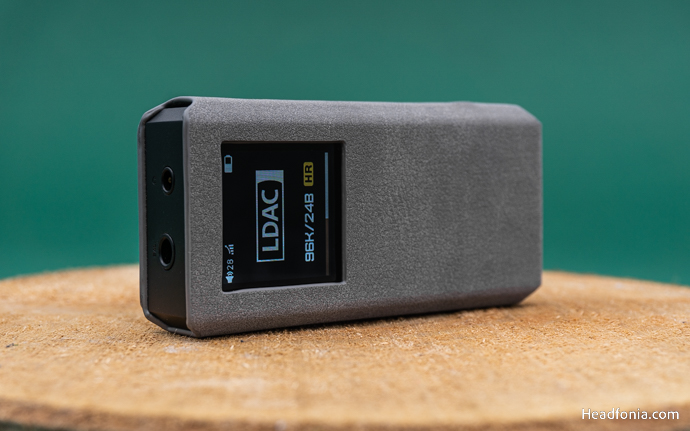
FiiO BTR7 Sound – Wired
The BTR7, like almost all other multi-purpose devices, offers better performance with a cable. If you ask what the differences are, I would say that the biggest differences are in detail, texture, imaging, and PRaT. Even the difference between AAC – 3.5mm and Wired – 4.4mm is quite large with a capable IEM like the Vision Ears’ VE7. Unfortunately, this is not under FiiO’s or any other company’s control, it’s just that Bluetooth and wireless technologies are not yet at the level we want them to be. Going back to the differences, the stage and positioning are sharper and more accurate with the wired connection. Instrument separation is better and the stage feels airier. The overall presentation is crisper and cleaner. Tonal balance is also better with the wired connection. Despite all this, the BTR7 is a very impressive device when you take size, weight, and price into account, and it performs very well against its wireless competitors. It is always good to have a device that is versatile enough to be used in a wide number of scenarios.
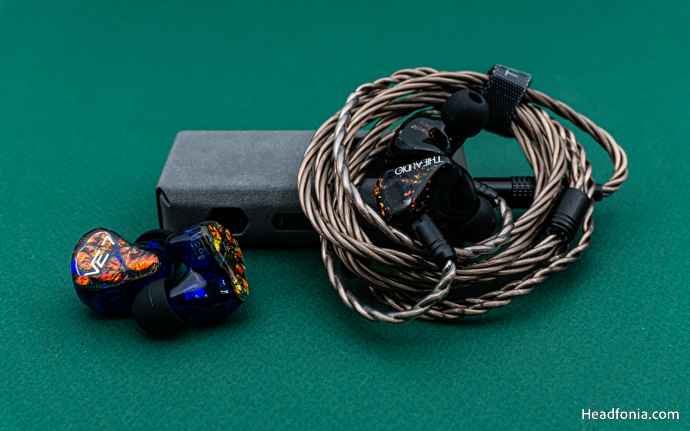
Direct Competitor Comparison: BTR5 2021
In my opinion, the biggest competitor of the FiiO BTR7 is the BTR5 2021 from FiiO! If you ask why I chose to compare it with the BTR5 2021 when there are devices like Shanling’s UP5, Audirect’s Beam 3 Plus, the answer is simple. When we reviewed the BTR5-2021, we talked about how great it is and how it outperforms its price bracket. The BTR5 2021 is still an incredibly successful device compared to its competitors and the BTR7 is almost 2 times more expensive. This makes the BTR5 2021 still a very good alternative. The BTR5 2021 differs from the BTR7 on the amp floor and other audio-wise optimizations. The BTR7 is more powerful and tonally different than the BTR5.
The tonal balance of the BTR5 is more linear and slightly more balanced than the BTR7. This makes the BTR5 2021 a good choice for audiophiles who prefer a balanced sound signature and want to pay less. The amount of bass offered by the BTR5 2021 is less in quantity than the BTR7 and positions the midrange further back. The BTR7 also has slightly better stage width and depth. The BTR5 2021 has a slightly better treble extension than the BTR7 and the resolution of the upper mids is slightly better. If you don’t have the budget for the BTR7, the BTR5 2021, which we awarded with an Headfonia Recommendation last year, is still a very good option.
Of course, this all depends on the power demands of the headphones you have. If you have a full-size, hard-to-drive headphone, the power provided by the BTR5-2021 may not be enough for you, in which case the BTR7 would be a better option. I recommend checking out the FiiO’s official comparison page for full specs side by side.
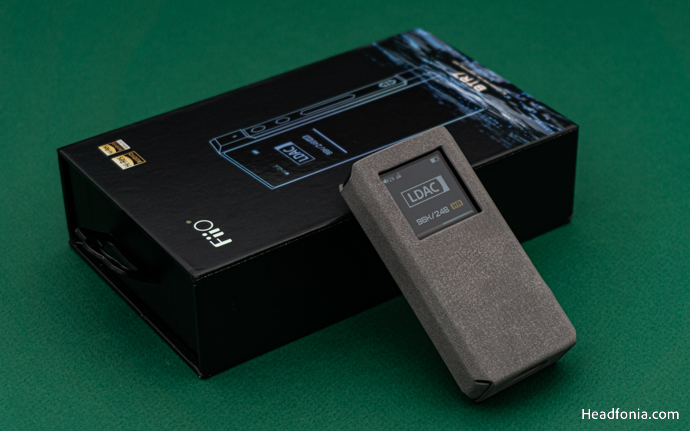
Last Words
BTR7, aka the new king of ultra-portable Bluetooth DAC & AMPs, offers many tricks up its sleeve. It offers an extensive feature set for a palm-sized device and it can be placed in many setups due to its versatile nature. It is a brilliant option for the traveling audiophile with plenty of power and fidelity on the go. It utilizes FiiO’s new THX modules and can push more than 300 milliwatts of power through its fully balanced audio circuitry. BTR7 offers stable operation with quality components, and FiiO’s long-term firmware support ensures worry-free use for the life of the product. If you are in search of a solid, portable all-in-one device, I highly recommend you take a look at the FiiO’s BTR7!
Page 1: FiiO, FiiO BTR7, Packaging & Accessories, Design & Build Quality
Page 2: Amplitude & Chipset, Features & Control
Page 3: Wireless Sound Performance, Wired Sound Performance, BTR5-2021 Comparison, Last Words







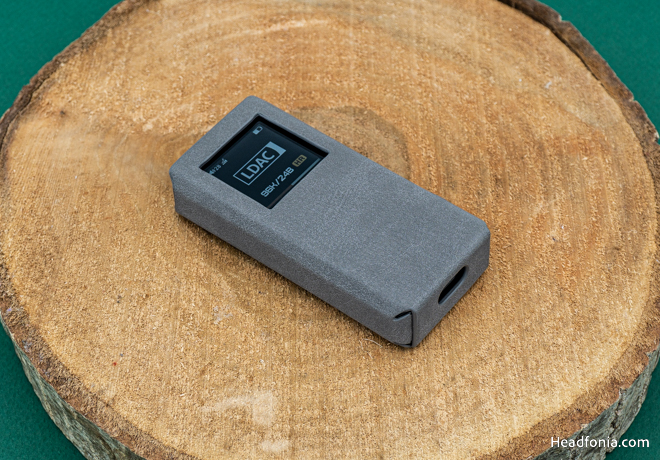
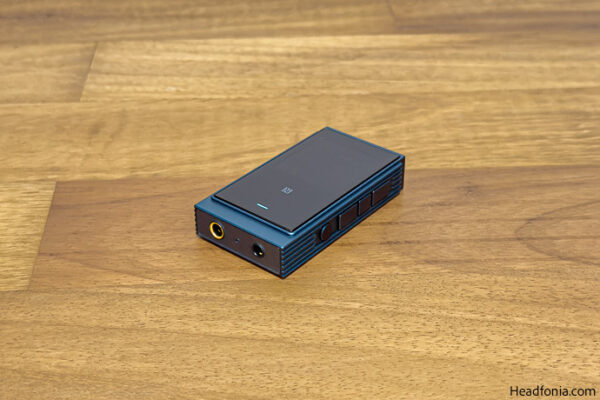
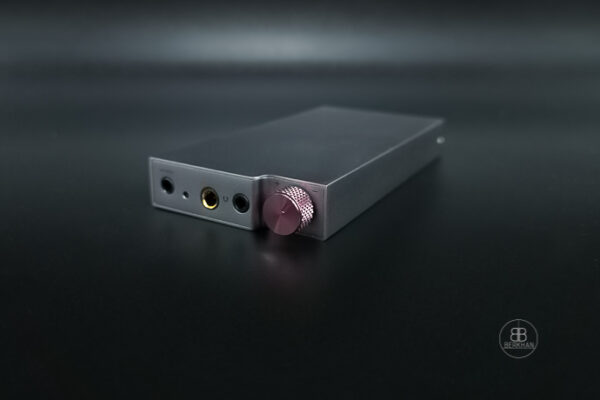
Mark Schneider
Did you mean BTR5-2021?
“Of course, this all depends on the power demands of the headphones you have. If you have a full-size, hard-to-drive headphone, the power provided by the UP5-2021 may not be enough for you, in which case the BTR7 would be a better option.”
Claudio
I think the BTR7 is an improvement of the BTR 5 (first version). I also think is more enjoyable to the old DAPs like fiio m6, Fiio m9 and the M11 (too bright for me). Fiio is doing a good job with their new releases. I own the m17 (wonderfull DAP) and the K7 (great sound too).
Andrius
Buggy device. Stuttering sound on S8+ tablet
Rick Hussey
I use my BTR7 with the Sennheiser HD598sr and KZ hbb PR2 planar magnetic iems. I use a 4.4mm balanced cable on both. The combo sounds utterly fantastic.